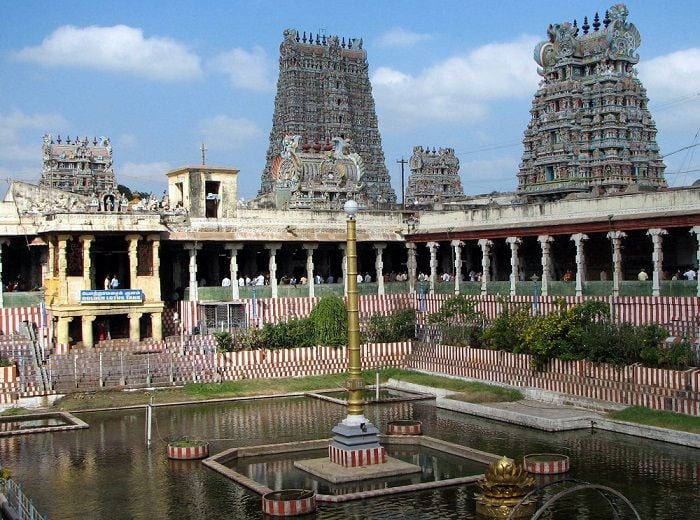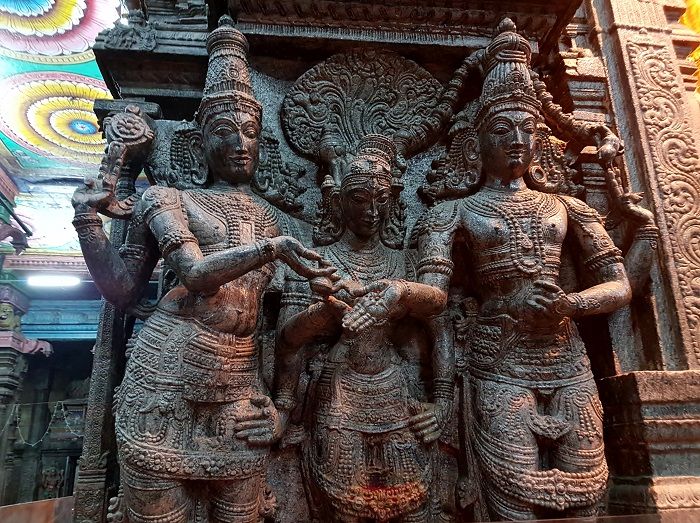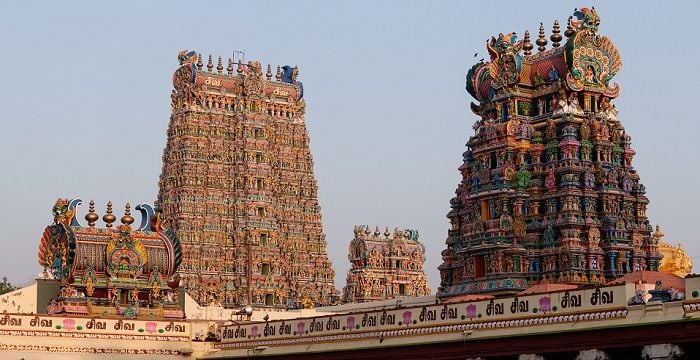The temple is also known as Minakshi-Sundareshwarar Temple .It is understood that the configuration of Sundareswaran means beautiful; married to Meenakshi who is in the form of Parvati exactly where the temple is located. This temple's tradition is Shaivism.
The Meenakshi temple got nominated as one among the world wonders because of astounding architecture however, couldn’t bring in under the list of seven wonders of the world. But it’s certainly said to be the the one of the ‘wonders of India'.
Thousands of devotees visit it every day, making it one of South India's most popular tourist destinations.
The temple gathers more than a million devotees during the 10-day ‘Tirukalyanam Festival.' This festival goes for about ten days where more than a million people visit that time. Given the increasing number of visitors each day, the temple is wellkept and has been designated India's "Best Swachh Iconic Place" (cleanest iconic place).
Mythology
Their saddest part is where a 3 year old girl with a triple breast arose from the sacred fire. Then Malayadwaja and his wife questioned the bizarre body when a divine voice was heard stating that the girls third breast will vanish when she addresses her destined husband. The King then named his child as Meenakshi and within a expected period the king crowned her as his heir.
Meenakshi took over the entire City of Madurai and slowly occupied other near by kingdoms. It is believed that she also invaded indralok(abode of Indra) and about to capture Kailash and even the abode of lord shiva .
To their surprise when lord Shiva happened to be in front of her the third breast vanished that’s where she joined her spouse. Then their sacred wedding happened when they came to Madurai and it was told that all Gods and deities had joined them.
Lord Vishnu, Parvati's brother, turned her up to Lord Shiva after she acquired the form of Meenakshi. Even now, the wedding ceremony is called as ‘Chithirai Thiruvizha' or ‘Tirukalyanam' and is celebrated every year (the grand wedding).
Architecture Of The Temple
The temple is build by Kulashekarar Pandyan. The temple is constructed in a ways that it dissipates around 14 acres in Madurai. When viewed from above, the entire building resembles a mandala.
A mandala is a structure created using symmetry and loci rules. The temple encircles with big walls is the answer to the invasions. The temple has shrines dedicated to a variety of deities, including Ganesh and Murugan, in addition to the two main shrines dedicated to Sundareswaran and Meenakshi.
The goddesses Lakshmi, Rukmini, and Saraswati are also housed in the shrine. The temple consists of glorified pond named as ‘Porthamarai Kulam' meaning pond with a golden lotus. It is believed that lord shiva appeared himself and blessed the pond that no Marine life would ever grow in the pond.
The pond's center is dominated by a golden lotus construction. The pond is thought to be an assessor in Tamil folklore, assessing the merit of fresh writing. The temple's four main towering gateways(gopurams) resembles one another. The temple consists of a while of 14 towering gateways. Each of which is a high rise pattern and they exhibit thousands of mythological aspects of stories and various sculptures.
The primary ‘gopurams’ of the temple
Kadaka Gopuram – This towering takes directly to the main shrine that has the Meenakshi. This gopuram has five storey's. The gate way was construed by Tumpichi Nayakkar during the mid-16th century.
Sundareswarar Shrine Gopuram - Kulasekara Pandya constructed the temple's earliest "gopuram." The Sundareswarar (Lord Shiva) shrine is accessed through the ‘gopuram.
Chitra Gopuram – The gopuram, which was built by Maravarman Sundara Pandyan II, depicts the religious and secular elements of Hinduism.
Nadukkattu Gopuram – This gateway, also known as the ‘Idaikattu Gopuram,' leads to the Ganesh sanctuary. The door way is situated in the middle of the two main shrines.
Mottai Gopuram – When compared to the other gateways, this one features lesser stucco images. For nearly three centuries, the ‘Mottai gopuram' had no roof.
Nayaka Gopuram – Visvappa Nayakkar constructed this ‘gopuram' around 1530. The ‘gopuram' looks strikingly similar to the ‘Palahai Gopuram,' another doorway.
The temple consists of countless pillar halls called Mandapams. These Mandapam's assist as resting spot for devotees and Pilgrims. They are constructed by kings and Emperors of that time. There are some notable Mandapams mentioned below:
1. Ayirakkal Mandapam – This directly summarizes to ‘hall with thousand pillars.’ Ariyanatha Mudaliar build this hall which makes all jaw drop as the hall is supported by 985 pillars. Each pillar is carved out a excellent way and contains the image of yali a mythological creature.
2. Kilikoondu Mandapam – This ‘mandapam’ was originally built to house hundreds of parrots. The parrots that were kept there in cages were trained to say ‘Meenakshi’. Sculptures of Mahabharata figures maybe found in the hall adjacent to the Meenakshi shrine.
3. Ashta Shakthi Mandapam – This Madapama dwells the sculptures of right goddesses. This is located in the middle of main gopuram and the gateway that takes to shrine.
4. Nayaka Mandapam – This hall is aided by 100 pillars and has a Nataraja statue. The Madapama was constructed by Chinnappa Nayakkar.
Significance & Worship
The temple denotes a generous bond between Shaivism, Vaishnavism and Shaktism. The temple shows the importance of women in a Tamil Hindu family as Meenakshi is significant God in this temple.
Lord Shiva is said to have executed the cosmic dance in the Sundareswarar shrine, which is one of the five ‘Pancha Sabhai' (five courts). Rituals and processions are the most common forms of worship.
A ceremony was conducted in regards to placing an image of Sundareswarar inside a palanquin then shifted into the shrine of Meenakshi. Then the palanquin is moved into the shrine all nights and again placed back to the shrine of Sundareswarar all mornings.
Before giving their prayers to Sundareswarar, worshippers traditionally worship Meenakshi..
Written By - Pratthiksha shree A
Edited By - Tushna Choksey











0 Comments